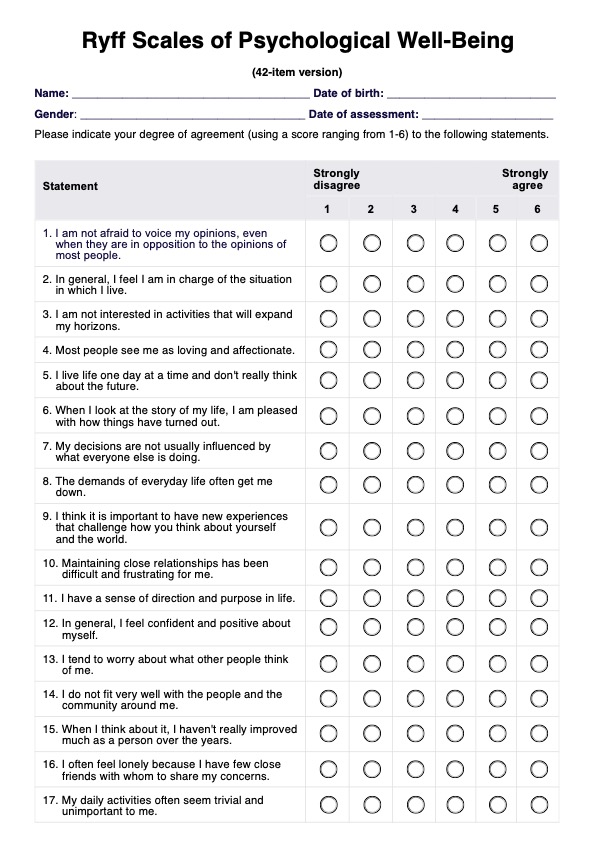The Ryff Scales of Psychological Well-Being are a framework developed by psychologist Carol Ryff to measure an individual's overall well-being and life satisfaction. Unlike traditional measures focusing solely on happiness, these scales emphasize personal growth, self-acceptance, and purposeful living. They assess how people perceive their past life and current circumstances, highlighting their ability to balance the good and bad qualities of their experiences. This approach examines whether individuals feel fulfilled or struggle with issues such as wandering or having difficulty managing everyday affairs.

Ryff Scales of Psychological Well-Being
Learn about the Ryff Scales of Psychological Well-Being. Download a free PDF template here.
Ryff Scales of Psychological Well-Being Template
Commonly asked questions
The six components of well-being, according to Carol Ryff, are self-acceptance, positive relations with others, autonomy, environmental mastery, purpose in life, and personal growth. These components reflect key aspects of life satisfaction, such as recognizing good and bad qualities, maintaining positive relationships, and feeling capable of managing everyday affairs. They also highlight the concept of positive human functioning, where individuals strive for self-determination, personal growth, and adaptability in life. A clear purpose in life helps individuals avoid wandering, guiding them toward personal goals and providing meaning.
To score the Ryff scale, respondents typically rate their agreement with a series of statements to measure each of the six components. Scoring involves averaging responses within each domain, with higher scores indicating greater psychological well-being. For example, low scores in environmental mastery may signal difficulty managing everyday affairs, while high scores in purpose in life suggest a clear direction and goals rather than wandering aimlessly. The results provide a nuanced understanding of how people evaluate their past lives and overall sense of fulfillment.
EHR and practice management software
Get started for free
*No credit card required
Free
$0/usd
Unlimited clients
Telehealth
1GB of storage
Client portal text
Automated billing and online payments











